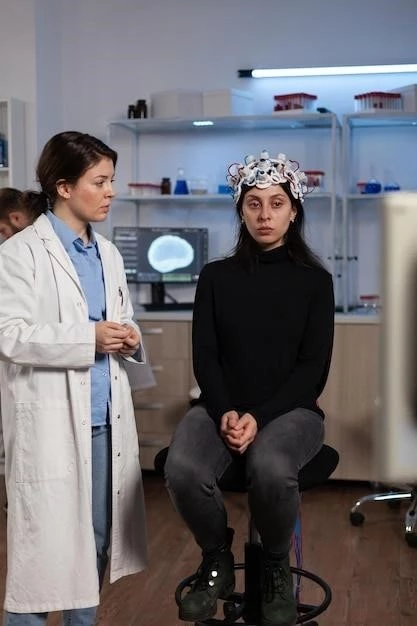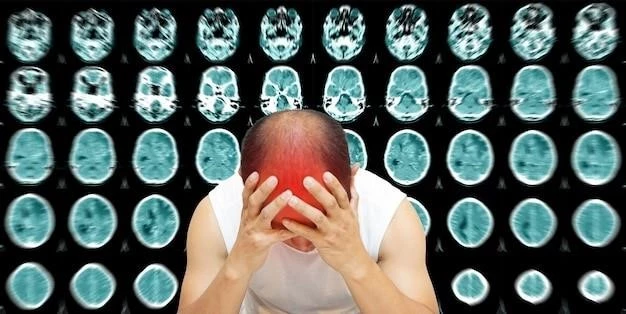Understanding Cerebral Cavernous Malformations
Causes of Cerebral Cavernous Malformations
Cerebral cavernous malformations are primarily caused by genetic mutations in the CCM1‚ CCM2‚ or CCM3 genes. These mutations lead to the formation of clusters of abnormally enlarged and irregularly shaped blood vessels in the brain. Additionally‚ these malformations can be sporadic or inherited through an autosomal dominant pattern.
Symptoms of Cerebral Cavernous Malformations
The symptoms of cerebral cavernous malformations can vary depending on the location and size of the malformation. Common symptoms include headaches‚ seizures‚ neurological deficits such as weakness or numbness‚ vision problems‚ and cognitive difficulties. In severe cases‚ these malformations can result in hemorrhages or stroke-like symptoms.
Treatment Options for Cerebral Cavernous Malformations
The treatment of cerebral cavernous malformations depends on various factors such as the location‚ size‚ and symptoms of the malformation. Options include observation‚ medication to manage symptoms like seizures or headaches‚ and surgery to remove the malformation. Radiation therapy and stereotactic radiosurgery can also be considered in some cases. The choice of treatment is individualized based on the patient’s specific situation and the risks involved.
Genetic Factors in Cerebral Cavernous Malformations
Cerebral cavernous malformations have a strong genetic component‚ with mutations in the CCM1‚ CCM2‚ and CCM3 genes being commonly associated with the condition. These genes play a crucial role in maintaining the integrity of blood vessels in the brain. Mutations in these genes disrupt normal blood vessel formation and maintenance‚ leading to the development of cavernous malformations. Understanding the genetic factors involved is essential for proper diagnosis‚ genetic testing‚ and potential targeted therapies in the future.
Surgery for Cerebral Cavernous Malformations
Surgery is a common treatment option for cerebral cavernous malformations‚ especially when symptoms are severe or there is a risk of hemorrhage. Surgical techniques may involve open surgery to remove the malformation or minimally invasive procedures such as stereotactic radiosurgery. The goal of surgery is to eliminate or reduce the risk of bleeding‚ alleviate symptoms‚ and improve the patient’s quality of life. The decision to proceed with surgery is made based on the individual’s overall health and the characteristics of the malformation.
Lifestyle Management with Cerebral Cavernous Malformations
Lifestyle management plays a crucial role in supporting individuals with cerebral cavernous malformations. This includes regular monitoring of symptoms‚ adherence to medication regimens as prescribed by healthcare providers‚ avoiding activities that may increase the risk of bleeding or exacerbate symptoms‚ maintaining a healthy diet‚ engaging in appropriate physical activities‚ and seeking support from healthcare professionals and support groups. Lifestyle modifications can help improve quality of life and manage the impact of cerebral cavernous malformations on daily functioning.
Complications of Cerebral Cavernous Malformations
Complications associated with cerebral cavernous malformations include hemorrhages‚ seizures‚ neurological deficits‚ headaches‚ and vision problems. Hemorrhages can result in serious neurological consequences‚ including stroke-like symptoms or even death. Seizures may occur due to the abnormal electrical activity in the brain caused by the malformations. Neurological deficits such as weakness or numbness can impact daily functioning. Prompt medical attention and appropriate management are essential to mitigate these complications and improve outcomes for individuals with cerebral cavernous malformations.

Research Advances in Cerebral Cavernous Malformations
Ongoing research in the field of cerebral cavernous malformations is focused on understanding the underlying genetic mechanisms‚ identifying new therapeutic targets‚ and developing innovative treatment approaches. Advances in imaging technologies have improved the detection and monitoring of these malformations. Researchers are also exploring the potential of gene therapy and personalized medicine in the management of cerebral cavernous malformations. Collaborative efforts between clinicians‚ scientists‚ and patients are essential in advancing knowledge and improving outcomes for individuals affected by this condition.
